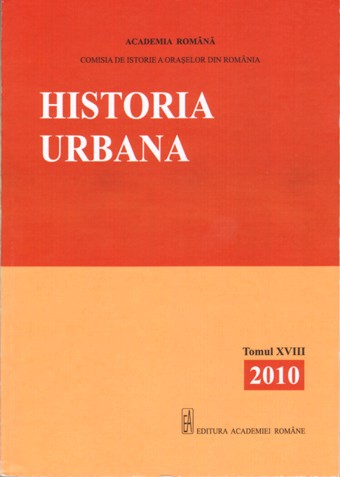Banca Naţională a României între binefaceri şi asistenţa socială instituţionalizată (1880-1938)
The National Bank of Romania, from Charities to Institutionalised Social Welfare (1880-1938)
Author(s): Mihaela Tone, Nadia ManeaSubject(s): History
Published by: Editura Academiei Române
Keywords: National Bank of Romania; budget; charity organisations; Institute of Pension Administrators; Loan Association; contributory social; benefits;
Summary/Abstract: In a time when the overall modernization of the Romanian society had already extended to the social welfare domain, shortly after the establishment of the National Bank of Romania, this institution involved itself in the financial support of the charitable acts which were initiated by some charity organizations, taking into consideration the fact that the towns in the Romanian Old Kingdom were facing numerous problems – floods, fires, epidemics and poverty. In the same time, being another act of charity, the NBR began to offer assistance to its own employees who were passing through difficult moments in their lives (deaths in their families, illnesses etc.), then the NBR started to organize an institutionalised system of protection for its own employees. Gradually, these acts of the bank became more frequent and more consistent, and they also got a more accurate description in the documents of the time. Generally speaking, according to the bank’s managerial team, the attitude of the bank regarding the marginal or semi-marginal urban population originated in the fact that it was a national institution, as the Governor Mitiţă Constantinescu said in February 1938, in a speech full of metaphors held at the Ordinary General Assembly of the members of the Institute of Pension Administrators, Loans and Financial Support for the NBR’s Personnel. Thus, in accordance to Mitiţă Constantinescu’s words: “The National Bank of Romania, my dear gentlemen, apart from keeping a strict and systematic administration of its objective affairs, has always shown a generous and broad attitude of understanding all necessities and distresses of all kinds (social, moral, cultural, state or national ones) and the means of the bank have been ungrudgingly put at the disposal of all these necessities in a philanthropic manner, either to support, to help these irrefutable cultural and national necessities, or out of plain generosity.” Usually, these charitable acts of the bank intended for the exterior, consisted of large or smaller amounts of money which were given both to charity organizations and to people who, temporarily or permanently, being in the situation of not having enough means of subsistence, were trying to find a solution and retorted to the goodwill of the bank. The documents in the NBR Archives offer the researchers the possibility to analyse this dimension from double perspective – from the benefactor’s and the beneficiary’s points of view, but for different chronological sequences. Thus, for the period 1880-1918, we can track, in the decisions of the General Council and those of the Board of Directors, the evolution of the sums granted by the bank and the names of the charity organisations that received them. Yet, it is not possible to find the names of the people who solicited the bank’s financial support and neither can we discover the reasons they used in order to persuade the bank.
Journal: Historia Urbana
- Issue Year: XVIII/2010
- Issue No: 18
- Page Range: 121-140
- Page Count: 20
- Language: Romanian
- Content File-PDF

